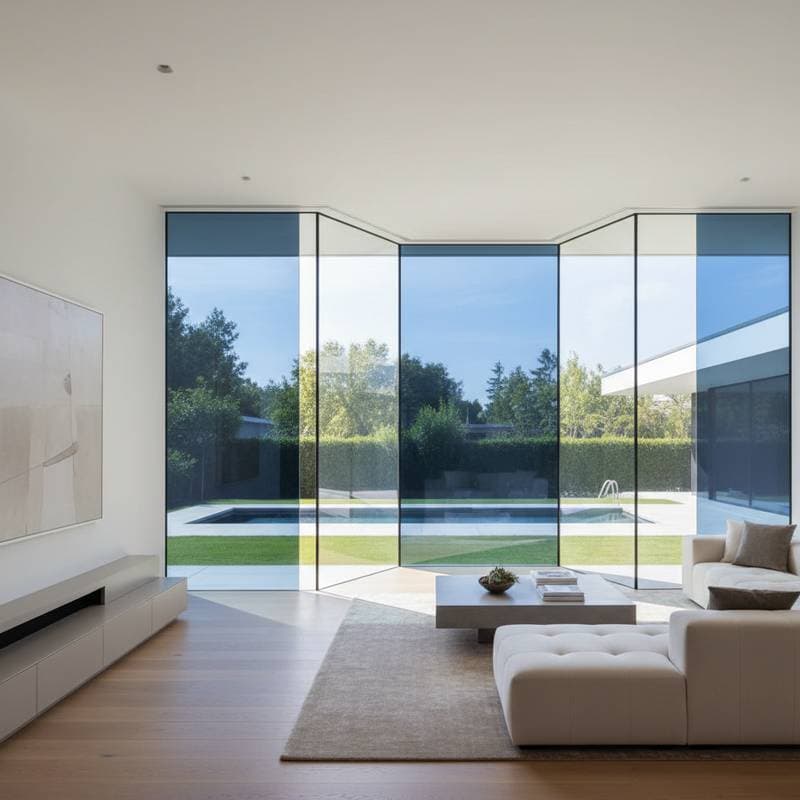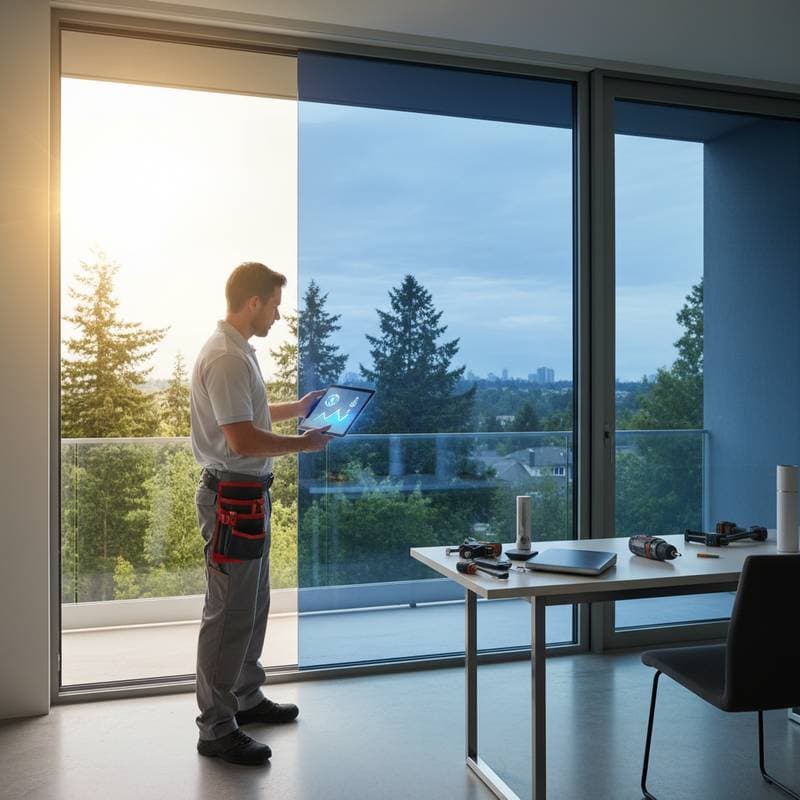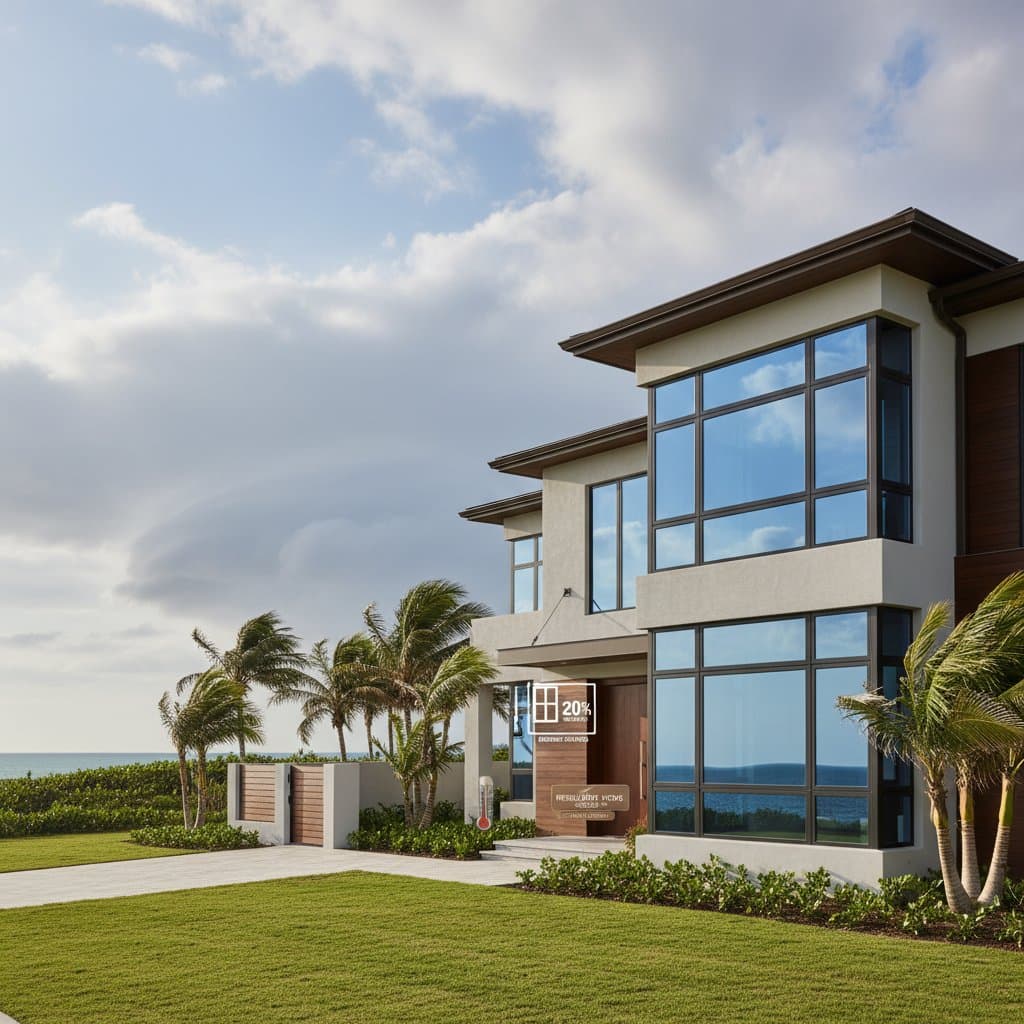Elevate Home Resale Value by 11 Percent with Smart Glass Windows
Smart glass windows, known also as electrochromic or switchable glass, change their tint levels automatically to manage incoming light and heat. Homeowners benefit from reduced energy use, improved privacy, and a contemporary look with minimal ongoing effort. Individuals considering renovations or efficiency upgrades find that these windows enhance property worth while decreasing utility expenses.
The technology operates through a low-voltage electrical current that alters the glass's opacity. Clear states allow maximum natural light during the day, while darker tints block glare and ultraviolet rays. Integration with smart home systems enables scheduling based on time of day or weather conditions, providing seamless control.
Advantages and Drawbacks
Advantages
Smart glass windows deliver several key benefits for modern homes.
- They reduce energy consumption by regulating solar heat gain, which lowers reliance on air conditioning and heating systems.
- Property appraisals show potential increases in resale value of up to 11 percent, according to recent real estate analyses.
- Privacy improves without the need for traditional coverings like blinds or drapes, maintaining unobstructed views.
- Interior furnishings and floors experience less fading from prolonged sun exposure.
- The frameless, minimalist design contributes to a sophisticated, up-to-date interior aesthetic.
Drawbacks
Despite their appeal, smart glass windows present certain challenges.
- Upfront expenses remain high, often ranging from 50 to 150 dollars per square foot depending on size and features.
- Installation demands electrical wiring and a compatible control mechanism, adding complexity.
- Availability varies by region, with fewer specialized suppliers in rural areas.
- Malfunctions in the glass coating or electrical components lead to costly repairs, sometimes exceeding 500 dollars per incident.
Installation Options: DIY or Professional
Installing smart glass requires careful handling due to its electrical and structural demands. Attempting a do-it-yourself approach suits only those with advanced skills in wiring and glazing.
DIY Considerations
The difficulty level rates as high for most individuals.
- Estimated time commitment: 4 to 8 hours per window, including preparation and testing.
- Essential tools include a multimeter for voltage checks, low-voltage wiring kits, glass suction cups for safe handling, and full safety equipment such as gloves and eye protection.
- Primary risks involve improper wiring that causes short circuits or damaged seals that compromise insulation and void manufacturer warranties.
Homeowners should assess their experience before proceeding. Simple single-window replacements in accessible locations might work, but errors often result in safety hazards or performance issues.
When to Hire Professionals
Opt for certified installers in these scenarios:
- Projects involving multiple windows, where efficiency and uniformity matter.
- Integrations with existing home automation platforms like voice assistants or centralized hubs.
- Homes featuring intricate electrical setups or oversized window frames that demand custom adjustments.
Professionals guarantee proper sealing against air leaks, secure electrical integrations, and adherence to building codes. Expect costs of 200 to 500 dollars per window, varying by location and complexity.
Upkeep and Durability
Smart glass demands minimal routine care, similar to standard windows. Regular cleaning preserves clarity and functionality without special products.
Maintenance Routine
Establish a consistent schedule to extend performance.
- Clean the glass surface every 3 to 6 months using mild soap, water, and microfiber cloths to avoid scratches.
- Examine seals and frames annually for signs of wear or moisture intrusion.
- Test the control system's calibration once a year to ensure accurate tint responses.
Avoid abrasive cleaners or high-pressure washers, which can harm the electrochromic layer. Professional inspections every few years help detect early issues in wiring or coatings.
Lifespan Expectations
Quality smart glass endures 20 to 30 years under normal conditions, influenced by brand quality and daily activation cycles. Reputable manufacturers offer 10-year limited warranties that cover tint functionality and electrical reliability. Factors like extreme temperatures or frequent switching may shorten this period, so select products tested for your climate.
Regional Considerations
Performance and costs of smart glass vary by location, affecting suitability and installation.
- In hot regions, electrochromic features excel at minimizing cooling demands by rejecting infrared radiation.
- Colder areas benefit from variants that permit increased solar warmth during winter months to support passive heating.
- Coastal environments require models with corrosion-resistant wiring and frames to withstand salt exposure.
- Urban settings often mandate permits for electrical modifications in windows; consult local authorities early.
- Installation labor proves more expensive in major cities, where hourly rates and logistics inflate totals by 20 to 30 percent.
Prior to purchase, verify compliance with standards like the International Energy Conservation Code. Local incentives, such as rebates for energy-efficient upgrades, may offset initial investments in qualifying areas.
Safety Protocols
Although smart glass uses low-voltage systems, standard electrical precautions apply to prevent accidents.
- Disconnect power sources prior to any wiring or control installations.
- Employ only UL-listed transformers and cables rated for indoor or outdoor use as needed.
- Seal all connections against humidity to avoid corrosion or shorts.
- Engage licensed electricians for permanent, hardwired configurations.
- Adhere strictly to manufacturer specifications for voltage and load capacities.
For elevated or expansive installations, choose safety glass compliant with ANSI Z97.1 for impact resistance. Tempered or laminated options provide additional shatter protection, essential for code approval in residential settings.
Frequently Asked Questions
Can smart glass receive manual tint adjustments?
Yes, electrochromic systems typically include options like wall-mounted switches, remote controls, or mobile applications for on-demand tint changes.
How does smart glass function without electricity?
During outages, the glass remains in its previous tint configuration. It requires power to transition between states.
Is retrofitting possible for existing window frames?
In most cases, yes, provided the frames remain structurally sound and accommodate necessary wiring. Custom retrofit panels minimize disruption.
Are smart glass options suitable for humid areas like bathrooms?
Yes, select humidity-rated models. Position wiring and power supplies outside damp areas to meet electrical safety codes.
What is the duration for tint transitions?
Electrochromic glass typically shifts from clear to tinted in 2 to 5 minutes, varying with panel size and ambient temperature.
Steps to Install Smart Glass Successfully
Smart glass windows merge enhanced privacy, energy savings, and aesthetic upgrades into a single solution. Initial costs exceed those of conventional windows, yet returns through reduced bills and elevated property value justify the expense for many. Engage certified professionals for secure implementation and optimal results. Obtain quotes from at least three qualified contractors, review warranty terms thoroughly, and confirm alignment with local regulations to proceed confidently.







